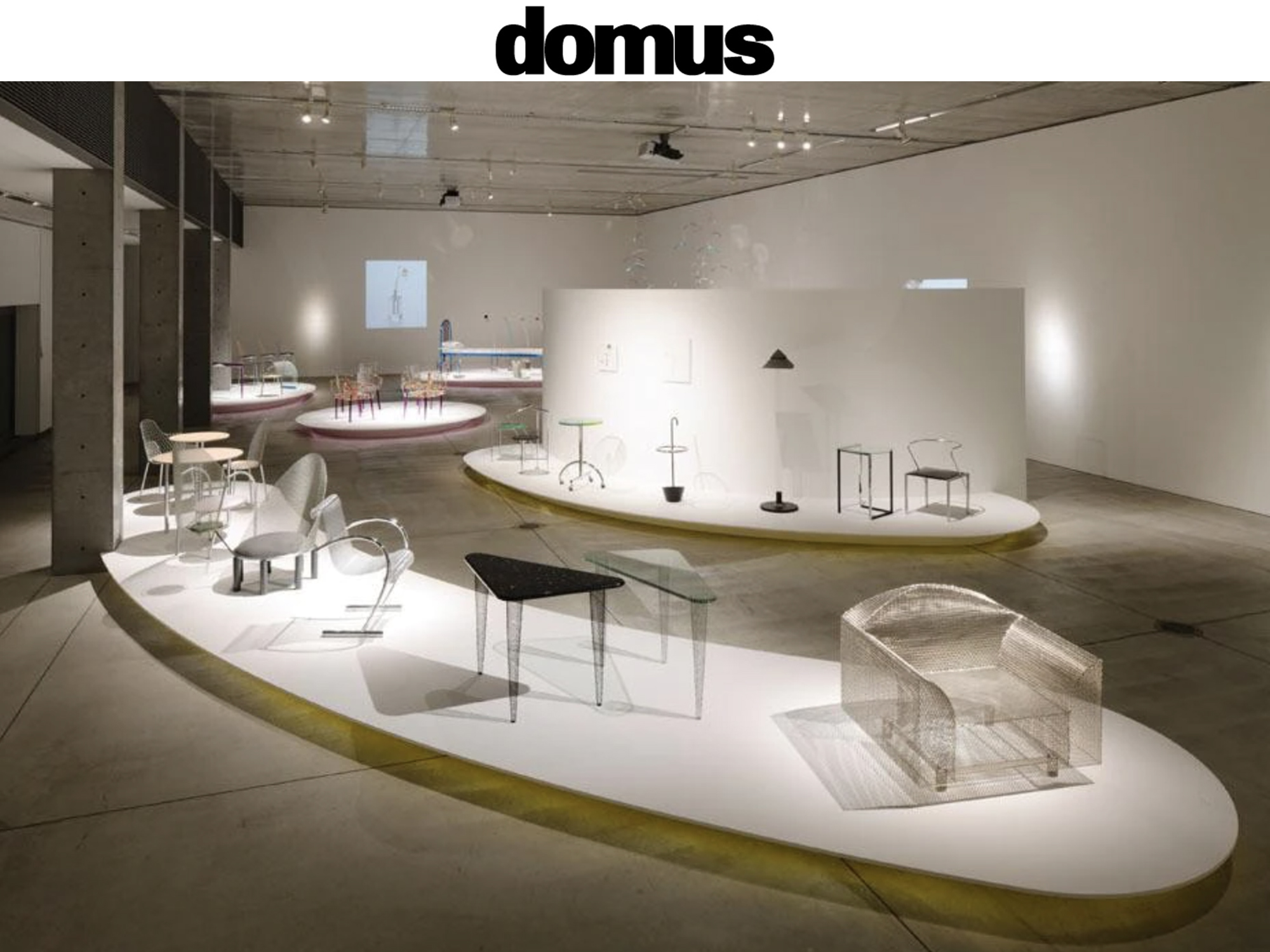By Salvator-John A. Liotta
Both core figures in the modern history of design, Shiro Kuramata (1934-1991) and Ettore Sottsass (1917-2007) were searching for a design that would bring joy and a sense of surprise to life via different means of expression, unmindful of the functions and utility we believe objects should contain. With this exhibition, its curator Yasuko Seki and the museum’s director Issey Miyake asks us to rethink the very meaning of the word “design”. They are anxious to stress it is not a retrospective: not everything is easily classified and the deliberate focus is on a “non-period”. For Seki and Miyake, the main aim of this exhibition – already planned before 21_21 Design Sight opened in 2007– was to convey the importance of dreams and love in design. The message is directed mainly at the new generations, unfamiliar with Kuramata and Sottsass’s work.
The current times we are living in are very different from those when these two masters of design were to the fore. The 1980s, in particular, when Kuramata and Sottsass cultivated their friendship, was a golden age for Japan, which aspired to being the number one nation in the world. A time when the economic miracle of the Rising Sun prompted people to take an interest in the quality of life and in design. Thirty years on, the widespread use of information technology and the Internet as too the lesson taught by globalisation are making us wonder “What is design?” once again.
The exhibition features approximately 60 pieces of transparent and precious works created by Shiro Kuramata in the 10-year span from 1981.
The exhibition uses design objects, period film-clips, slideshows and a number of quotations to show the greatness of these two designers, who never pursued success or riches. On the contrary, the very words irritated them. When presenting the exhibition, Barbara Radice-Sottsass said that the two designers should, perhaps, be seen as two modern witchdoctors who wanted to use design to cure the world; two poets who happened to be designers.
The exhibition features approximately 20 never-seen-before art pieces based on Ettore Sottsass’s drawings created in 2004, inspired by the Native American doll “Kachina.” The vases have been produced by Belgian gallerist Ernest Mourmans and CIRVA Marseille.
Kuramata was inspired by Sottsass’s playful spirit and joined the Memphis collective. In Sottsass, he found not just a master but also a friend with whom to cultivate what proved to be a long professional partnership. Sottsass told Kuramata they ought to write the most beautiful poetry ever using the crudest language possible and produce a sort of alchemic reaction that turns lead into gold and distils the impurities. That is why they were not afraid to employ industrial materials and waste. Kuramata and Sottsass spoke two different tongues but had a common language: design. They came from two different cultures. One believed in traditional central European values and the other in the Japanese aesthetic, but they were travelling in the same direction. Together, they dreamt of an ideal of extreme beauty and they never stopped exploring the inherent possibilities of the creative process.
“The exhibition shows the greatness of these two designers, who never pursued success or riches.”
Approximately 60 of the pieces presented were created by Shiro Kuramata over a period of ten years, from 1981 until his death. They reflect ideas prompted by the Japanese master’s lightness: “My ideal is to see objects floating in the air with no support; my design is born and evolves out of these images. I am attracted to transparent materials because transparency does not belong to any special place but it exists and is everywhere, nevertheless”, he said. The pieces on show include many in acrylic, a material Kuramata loved for its sense of “non-existence”, which suited his philosophy of presence-absence. The anti-objectual nature of his creations stimulates the observer’s tactile and visual senses and reawaken images deep down in the mind.
Named after a jazz piece by Duke Ellington, the How High The Moon armchair is a poetic abstraction of a traditional armchair whose shape is further “dematerialised” by the mesh of which it is constructed. The chair is produced in a limited edition by Vitra.
As well as in interviews from the Memphis period, Ettore Sottsass is present with 20 previously unshown glass pieces based on the drawings made shortly before his death. They were inspired by the native American Indian Kachina dolls that represent supernatural beings such as the sun, the clouds, the ogre or magic lizards revered by some Indian tribes. Sottsass evokes the spirits with the Kachina dolls and their sinuous, playful forms. He sees it as a way of overcoming fear, “a way of somehow blocking the unknown.” In Japanese, the word Honshitsu means essential and it describes the intrinsic nature of a design work. This is because, from the very beginning, their first design works were offered to their gods and not conceived for functional purposes or for consumers. This word Honshitsu – a theoretical lens through which to appraise the two designers’ work – explains the reasons behind the friendship of two souls who resonated in unison and spoke the same language.
“Kachinas are wooden dolls dressed with fabric, furs, animal hair and feathers and painted in different designs and colours. They can also be masks worn by men who dance so-called ceremonial dances in town squares, mainly on the winter solstice but sometimes also in mid-July. Kachinas are also supernatural beings, but they are neither gods nor people. They are the souls of the unknown, of everything that is unknown, so kachinas represent the unknown in our existence in the universe…”, with these words, in 2004, Ettore Sottsass described the Kachinas
This exhibition allows us to encounter and experience a design that has no creative limits whatsoever. The works by these two design legends exude love and invite us to dream and dream – a generous message of freedom for the new generations.










